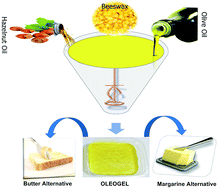Oleogels as spreadable fat and butter alternatives: sensory description and consumer perception
Abstract
Table spreads are one of the fundamental ingredients of human diets. Generally, butter and margarine are the most preferred spread products among others. Moreover, these products have some disadvantages such as high saturated fatty acids contents and the presence of trans fatty acids. In this study, virgin olive oil and hazelnut oil oleogels were prepared with beeswax and sunflower wax, while the hazelnut oil oleogels were aromatized with diacetyl. For the reason stated above, the first purpose of this study was to test the sensory properties and consumer acceptance of virgin olive oil when prepared as a spreadable fat in oleogel form. The second purpose was to determine how the hazelnut oil oleogels would be received as a butter alternative by the sensory and consumer tests as well. The results revealed that both types of oleogels are structurally and thermally suitable as alternative products. For the first time in the literature, these oleogels were described by a panel with thirteen sensory definition terms (hardness, spreadability, liquefaction, grassy, milky, rancid, fatty, sweet, salty, waxy, grittiness, cooling and mouth coating). Hedonic attributes (appearance, odor, flavor, spreadability) tested by the consumers proved that these oleogel products have potential as spread and/or butter alternatives. In the consumer survey study, one of the striking results indicated that more than 50% of the consumers would buy or try once, then decide to buy the oleogel products. In conclusion, these oleogels can be used as spreads or butter alternatives.


 Please wait while we load your content...
Please wait while we load your content...